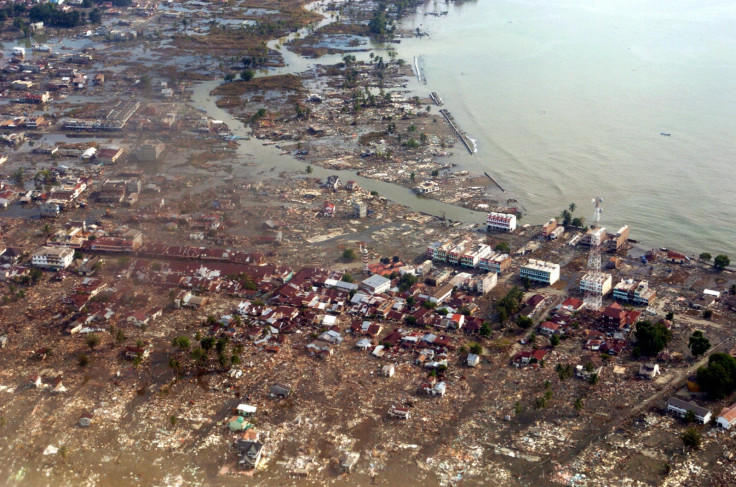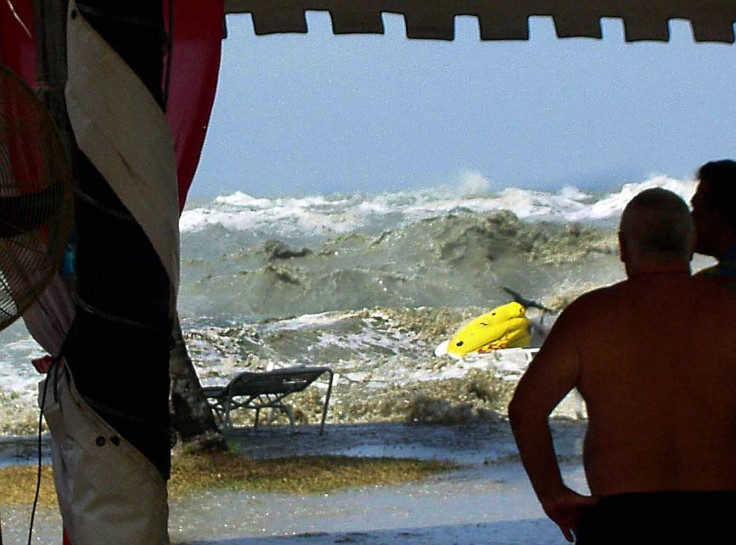Boxing Day tsunami: How the 2004 Indian Ocean earthquake became the deadliest in history
The earthquake and tsunami struck on 26 December 2004

The Boxing Day Indian Ocean earthquake and tsunami in 2004 was the deadliest in recent history, killing at least 220,000.
The earthquake and tsunami struck on 26 December 2004, hitting Indonesia, Sri Lanka, India, Thailand, the Maldives and Somalia. The earthquake hit at just before 1am UTC with its epicentre off the west coast of Sumatra.
It measured between magnitude 9.1 and 9.3 – the third largest earthquake every recorded on a seismograph – and was known as a megathrust earthquake. This happens when one tectonic plate is subducted by another.
There were a number of factors that made the earthquake and proceeding tsunami so deadly, which all culminated to make the natural disaster one of the worst in modern history.
David Long, marine geohazards team leader for the British Geological Survey, told IBTimes UK that normally when earthquakes happen, just one small section of the plate moves down. However, with the 2004 earthquake, 1,200km of the plate suddenly moved.
"That progression carried on further north for a best part of a minute and a half for the whole section to finish moving."
In the event, the Indian Plate was subducted by the Burma Plate. "Most times when we talk about big earthquakes and the tsunamis they create, we invariably think of the Pacific Ocean, because that's where almost all the big subduction zones are," Long said.
"But there is this subduction zone to the west of Indonesia and the Indian Ocean just doesn't get them on a frequent enough basis to recognise that there's a perpetual problem."
While there is no way to predict earthquakes, Long noted that places like Japan and Chile are conscious of the disaster potential because they happen fairly often. Smaller earthquake do take place on the Indonesian line but do not tend to spread to a large area.
"The consequence in 2004 was that populations on the coast were getting bigger and it struck coastlines that were occupied at the time by holidaymakers from everywhere."
Japan, for example, is "much better prepared for tsunamis", he said. In the case of the 2011 earthquake and tsunami, warnings were issued so authorities and the public could react – but this did not happen in 2004.
"Some people in Sumatra who would have felt the earthquake may have reacted to it, but that wave travelled a long way and hit countries which didn't feel the earthquake ... the likes of Thailand and Sri Lanka didn't know what was going to be hitting them."
December is also high season for Thailand and other countries nearby, meaning the beaches and surrounding areas were at their busiest peak of the year.
The earthquake struck about 160km west of northern Sumatra at a depth of about 30km - fairly shallow waters. It caused the displacement of the seabed resulting in a cliff line and released a huge amount of energy – scientists said it was equivalent to 23,000 Hiroshima-type atomic bombs.
David Tappin, marine geologist and principal researcher at the British Geological Survey, said the vertical displacement of the seabed caused the tsunami. He told IBTimes UK: "The rupture was unusual, it was unexpected at that location. Previous research had suggested that the Indian Ocean was not vulnerable to this magnitude earthquake and also the rupture was very large.

"The rupture was divided up into three segments and it was the southern segment that was off of Sumatra which was facing south west which generated the tsunami. Because it was at that location and it was the actual orientation of the rupture (about 400k long out of a total of 1,200km) then the tsunami generated and went eastwards towards Sumatra and Thailand and places like that. It also went to the south west to India."
As the land moved, the wave travelled outwards in both direction: "On one side of the step is the positive wave and on the other side is a negative wave."
Once the wave is generated, you get a series of waves moving outwards and as it advances it breaks up. Tsunamis generated by earthquakes have a very long wave length – around 500km in length – and they travel at the speed of a jet airliner without losing energy.
They are called shallow water waves because the wavelength is so much bigger than the depth of the water: "It's because of this they can travel so fast and so far," Tappin said. The wave also touches the seabed, which means they can refract – the ocean depth guides where they travel and the orientation can change.
Initially, the wave was about 60cm to one metre in height and if you had been on a boat in the ocean, you would not have really noticed it passing.

"As they travel, they travel fast and they're not dangerous. But when they approach the coastline this 60cm wave becomes incredibly dangerous, because it's not just one wave. They're travelling very fast and as the water depth is reduced, the friction effect on the bottom of the wave becomes ever increasingly important and the wave slows.
"The individual waves as they slow they catch up with each other, so the 60cm wave, depending on its initial height and wave length can build up to elevations on the coast of tens of metres."
In Aceh, evidence suggests the waves reached up to 24m when they hit land, rising to 30m in other areas.
The major problem with the 2004 tsunami was the low-lying land it struck. Tappin said that a 10m hitting the cliffs of Scotland would hardly be noticed, but on the low-lying coastlines of Sri Lanka and India, "this can inundate not only the beach and the back beach areas, and you get locations where the tsunami can travel kilometres inland".
At least 220,000 people were killed in the disaster, but the real death toll is thought to be far higher from the numbers of missing. The Indian Ocean Tsunami Warning System was set up in the aftermath of the earthquake, however experts say weaknesses remain in the system.
Asked if an earthquake of such magnitude could happen again, Long said that the stress that had been building in the 2004 earthquake has been released and it will take a long time for it to accumulate again in the same area: "But there are other sectors which haven't been released so the pressure continues to build up in those," he said.
© Copyright IBTimes 2025. All rights reserved.






















